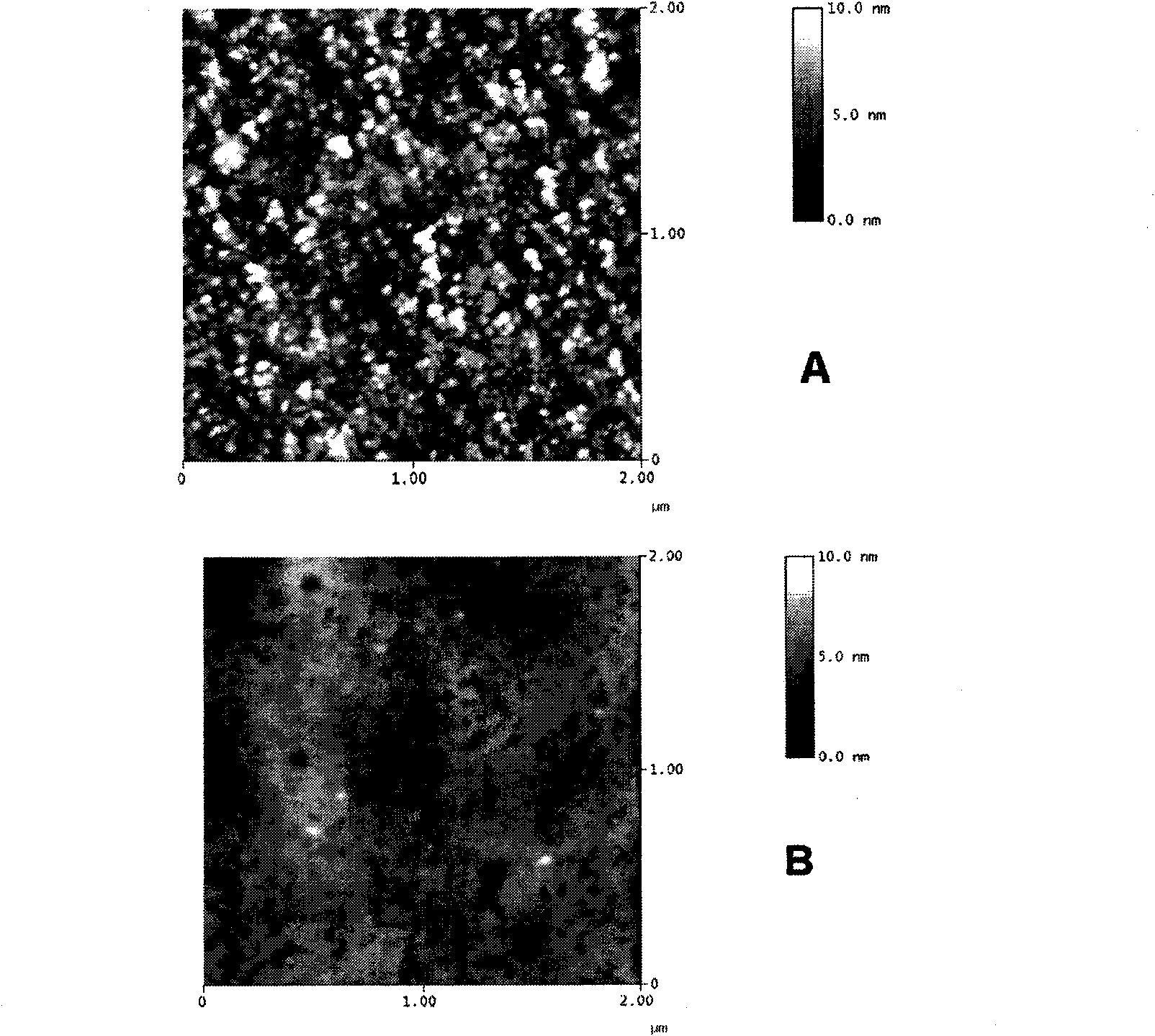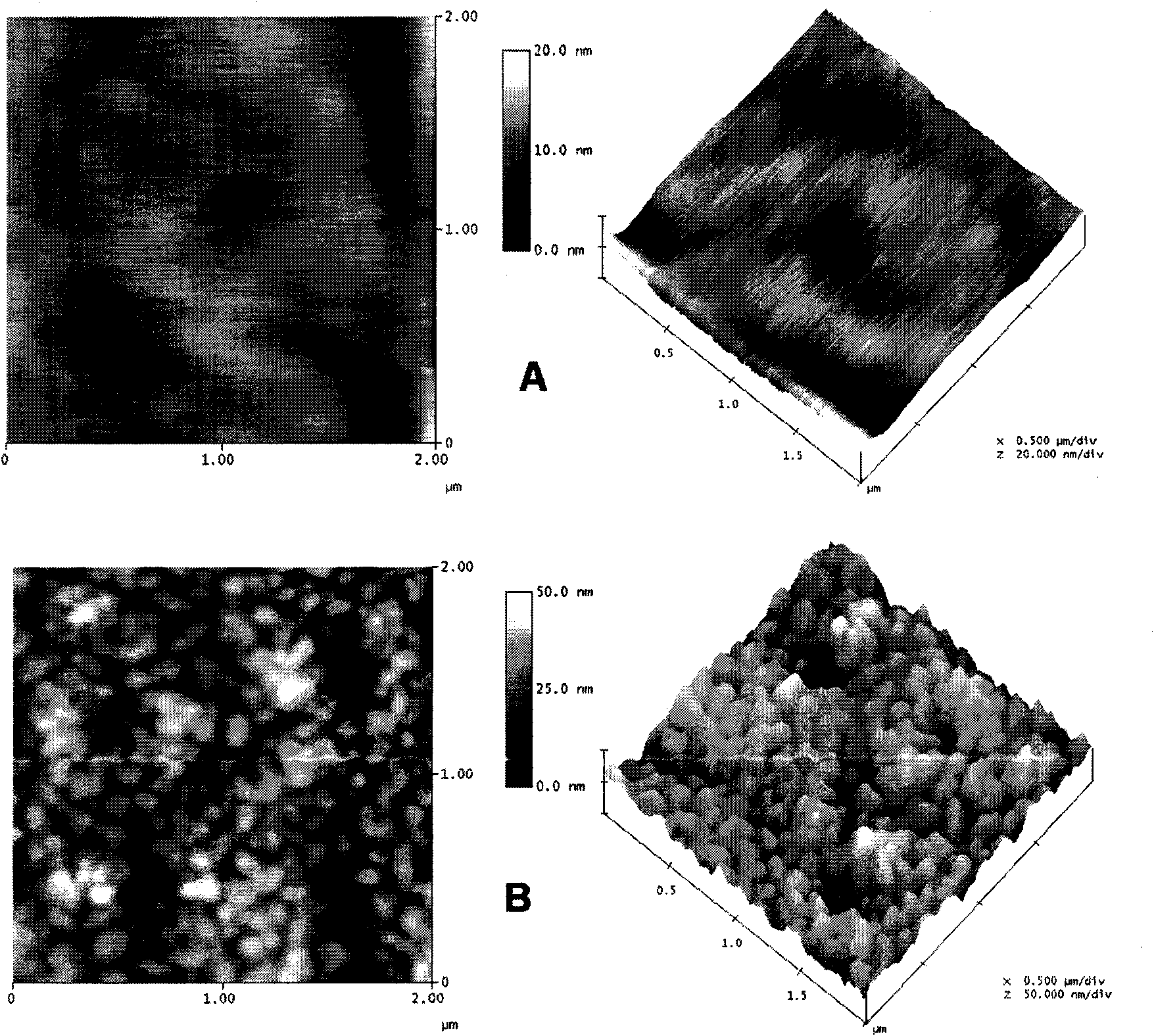Method for preparing stimulating responsive polymer brush
A stimuli-responsive, polymer brush technology, applied in the field of preparation of stimuli-responsive polymer brushes, can solve the problems of difficult large-scale preparation, time-consuming and labor-intensive, restricting the use of polymer brushes, etc., to achieve simple operation, broad application prospects, The effect of high graft density
- Summary
- Abstract
- Description
- Claims
- Application Information
AI Technical Summary
Problems solved by technology
Method used
Image
Examples
Embodiment 1
[0019] 1. Substrate treatment
[0020] Boil the silicon substrate in a mixed solution of concentrated sulfuric acid and hydrogen peroxide for 1 hour. The mass ratio of concentrated sulfuric acid and hydrogen peroxide in the mixed solution is 7:3. Then place the substrate in acetone for 30 minutes and rinse it with deionized water. , drying to remove organic matter and impurities on the surface of the substrate.
[0021] 2. Self-assembly of epoxy silane coupling agent
[0022] The cleaned and dried substrate was immersed in a 5 mM toluene solution of 3-glycidyl propoxytrimethoxysilane and allowed to stand for 12 hours. Then, the taken-out substrate was ultrasonically cleaned successively in toluene and acetone, and then dried to obtain the self-assembled substrate of epoxy silane coupling agent.
[0023] 3. Initiator DAB-16-TX grafting
[0024] Immerse the self-assembled substrate of the epoxy silane coupling agent in a chloroform solution with a photoinitiator DAB-16-TX con...
Embodiment 2
[0028] 1. Substrate treatment
[0029] Boil the silicon substrate in a mixed solution of concentrated sulfuric acid and hydrogen peroxide for 1.5 hours. The mass ratio of concentrated sulfuric acid to hydrogen peroxide in the mixed solution is 7:3. Then place the substrate in acetone for 20 minutes of ultrasonication. Rinse and dry to remove organic matter and impurities on the surface of the substrate.
[0030] 2. Self-assembly of epoxy silane coupling agent
[0031] The cleaned and dried substrate was immersed in a 5 mM toluene solution of 3-glycidyl propoxytrimethoxysilane and allowed to stand for 12 hours. Then, the taken-out substrate was ultrasonically cleaned successively in toluene and acetone, and then dried to obtain the self-assembled substrate of epoxy silane coupling agent.
[0032] 3. Initiator DAB-16-TX grafting
[0033] Immerse the self-assembled substrate of the epoxy silane coupling agent in a chloroform solution with a photoinitiator DAB-16-TX concentrati...
Embodiment 3
[0038] 1. Substrate treatment
[0039] Boil the silicon substrate in a mixed solution of concentrated sulfuric acid and hydrogen peroxide for 2 hours. The mass ratio of concentrated sulfuric acid and hydrogen peroxide in the mixed solution is 7:3. Then place the substrate in acetone for 10 minutes and rinse it with deionized water. , drying to remove organic matter and impurities on the surface of the substrate.
[0040] 2. Self-assembly of epoxy silane coupling agent
[0041] The cleaned and dried substrate was immersed in a 10 mM toluene solution of 3-glycidyl propoxytrimethoxysilane and allowed to stand for 12 h. Then, the taken-out substrate was ultrasonically cleaned successively in toluene and acetone, and then dried to obtain the self-assembled substrate of epoxy silane coupling agent.
[0042] 3. Initiator DAB-16-TX grafting
[0043] Immerse the self-assembled substrate of the epoxy silane coupling agent in a chloroform solution with a photoinitiator DAB-16-TX concent...
PUM
 Login to View More
Login to View More Abstract
Description
Claims
Application Information
 Login to View More
Login to View More - R&D
- Intellectual Property
- Life Sciences
- Materials
- Tech Scout
- Unparalleled Data Quality
- Higher Quality Content
- 60% Fewer Hallucinations
Browse by: Latest US Patents, China's latest patents, Technical Efficacy Thesaurus, Application Domain, Technology Topic, Popular Technical Reports.
© 2025 PatSnap. All rights reserved.Legal|Privacy policy|Modern Slavery Act Transparency Statement|Sitemap|About US| Contact US: help@patsnap.com



